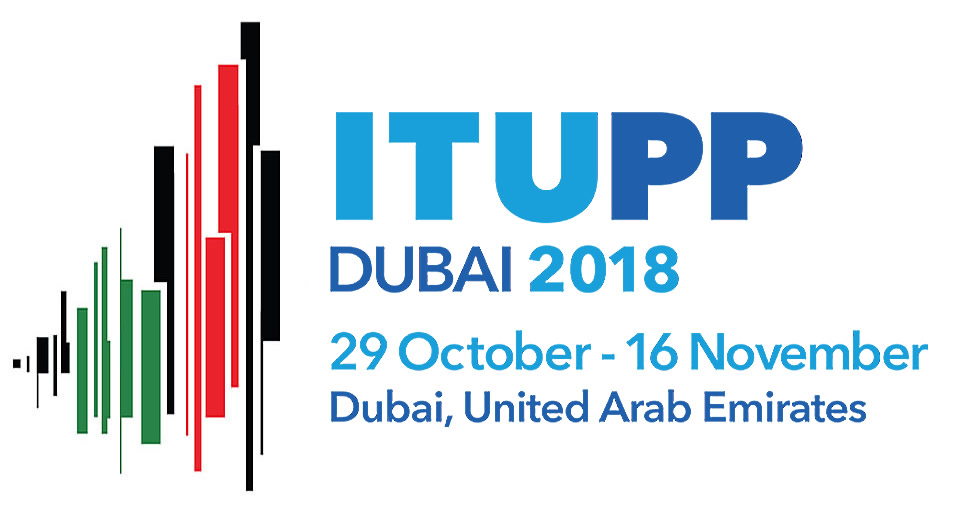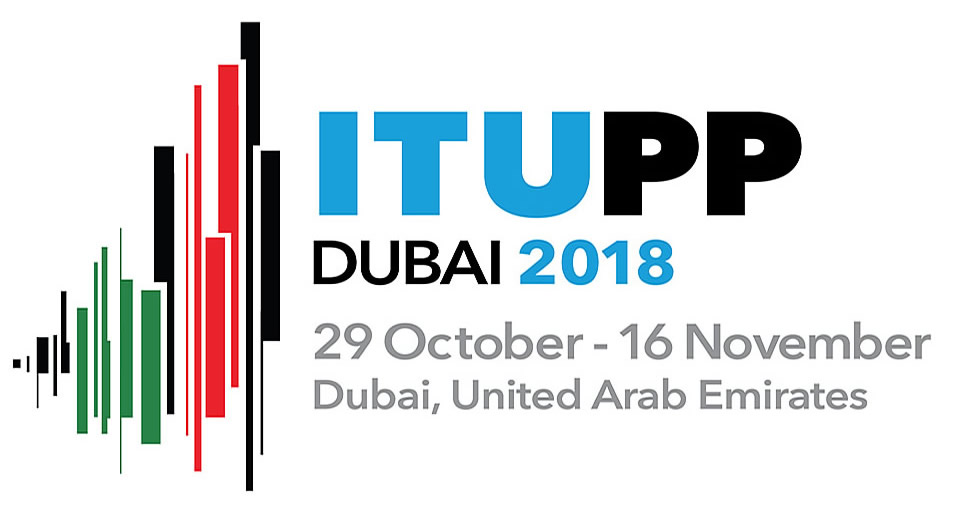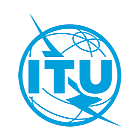This is the version of the backgrounder prepared for the Plenipotentiary 2018 Conference in October/November 2018. For the most recent version of this backgrounder, please see here.
Overview
- Consumer demands are shaping the development of mobile broadband services. Anticipated increases in traffic, number of devices, services, as well as demand for enhanced affordability and user experience will require innovative solutions.
- IMT-2020 is expected to be rolled out as of 2020, with 5G trials and pre-commercial activities already underway to assist in evaluating the candidate technologies and frequency bands that may be used for this purpose. By transporting a huge amount of data much faster, reliably connecting an extremely large number of devices and processing very high volumes of data with minimal delay, 5G is expected to connect people, things, data, applications, transport systems and cities in smart networked communication environments.
- 5G is expected to support applications such as smart homes and buildings, smart cities, 3D video, work and play in the cloud, remote medical surgery, virtual and augmented reality, and massive machine-to-machine communications for industry automation and self-driving cars. 3G and 4G networks currently face challenges in supporting these services.
- Due to its sheer scale and scope, 5G is expected to accelerate the achievement of all 17 Sustainable Development Goals (SDGs), from affordable and clean energy to zero hunger.
 WSIS Forum 2018 Photo Contest, Holographic Lenses at the Coding Garage, Mexico
WSIS Forum 2018 Photo Contest, Holographic Lenses at the Coding Garage, Mexico
Challenges and solutions: building 5G networks for the future
When ready for deployment, 5G networks are expected to deliver more speed and capacity to support massive machine-to-machine communications and to provide low-latency, high-reliability service for time-critical applications. With such ambitious goals, 5G networks face considerable operational challenges such as meeting higher levels of stability[1], security[2] and reliability[3]. 5G networks aim to demonstrate high performance in different scenarios such as dense urban areas, indoor hotspots and rural areas. A number of countries have started trials for 5G and the results are under assessment, with many companies successfully completing specific limited trials.
Like previous mobile broadband generations, 5G networks will use the radio-frequency spectrum. The radio-frequency spectrum is divided into frequency bands, allocated to radiocommunication services in such a way that each band may be used only by services which can co-exist with each other. The increased traffic and speed required for 5G will necessitate much more spectrally efficient technologies, as well as a lot of additional spectrum, beyond what is currently used by 3G and 4G. Most of it will come from frequency bands above 24 GHz, which pose considerable challenges in terms of radiowave propagation and are also used by a number of radiocommunication services, notably for satellite communications, weather forecasting and monitoring of Earth resources and climate change.
To avoid interference between 5G and these services and thus ensure a viable mobile ecosystem for the future—and to reduce prices through the global market’s economies of scale and enable interoperability and roaming--national and international regulations need to be adopted and applied globally in these bands. The additional spectrum to be used by 5G therefore needs to be identified and harmonized at a global level. For the same reason, the radio technologies used in 5G devices need to be supported by globally harmonized standards.
ITU’s contribution
ITU plays a key role in the development and adoption of these global regulations and standards. ITU membership is working to ensure that 5G networks are secure, stable, reliable, interoperable, safe for human health and energy efficient, and that they operate without interference. ITU’s role in managing the globally harmonized radio-frequency spectrum and standards for 5G is a key enabler in the development and implementation of 5G.
ITU’s Standardization Sector is playing a convening role for the technologies and architectures of the wireline elements of 5G systems.
Managing the radio-frequency spectrum
Spectrum is a limited natural resource which may be used to and from any point on the Earth and in Space. Because radio waves propagate irrespective of national borders, the use of a portion of the spectrum in one geographic area may affect the ability to use the same portion in other areas by causing harmful interference. Spectrum therefore needs to be managed at national and international levels.
ITU’s role, through its Radiocommunication Sector (ITU-R), is to ensure the rational, equitable, efficient and economic use of the radio-frequency spectrum by all radiocommunication services, including satellite services, in particular by avoiding and eliminating harmful interference.
For this purpose, the radio-frequency spectrum is divided into frequency bands which are allocated to radiocommunication services in such a way that each band may be used only by services which can co-exist with each other. These allocations and the procedures ensuring the international recognition and protection from interference of spectrum uses in each country and in Space are contained in the ITU Radio Regulations (RR). The RR is an international treaty ratified and applied by all ITU Member States. It has been in force since 1906 and is updated every four years by the ITU World Radiocommunication Conferences (WRCs) to take into account the evolution of technologies and spectrum uses.
Every satellite, every aircraft, or ship, every television or radio station, every mobile device, every defence, air traffic or maritime radar, uses a certain frequency band as prescribed by the Radio Regulations. The global allocation of frequency bands by ITU allows all radiocommunication services to co-exist without interference. It gives all stakeholders, including those involved in 5G development, the certainty that these bands will be available for use and protected in all countries in the foreseeable future. In other words, it provides certainty for long-term investments, which is the basis for the sustainable development of the ecosystem.
In addition to reducing interference, the benefits of harmonized spectrum include facilitating economies of scale, helping build markets, enabling global roaming and reducing the cost and complexity of equipment design.
As part of the four-year process of studies and preparations for the ITU World Radiocommunication Conference 2019 (WRC-19), global stakeholders are working towards building consensus to allocate and identify additional spectrum for International Mobile Telecommunications (IMT, the generic term used by ITU to designate 2G, 3G, 4G, 5G and future generations of mobile broadband services) during that conference.
The first full-scale commercial deployments for 5G are expected shortly after IMT-2020 specifications are finalized in 2020. Regulators around the world are already auctioning licenses to operate 5G networks in the frequency bands allocated by ITU and identified or expected to be identified for IMT.
Managing human exposure to electromagnetic frequencies
Like previous generations, 5G networks will generate electromagnetic fields. Exposure of the public to these fields is subject to international and national regulations. The World Health Organization (WHO) sets the recommended limits. ITU collaborates with WHO to provide guidance and recommendations regarding the monitoring and compliance of radio installations with these limits.
Setting standards for globally harmonized, stable, secure and reliable 5G
ITU has a rich history in the development of global standards for mobile communications. The framework of standards for international mobile telecommunications (IMT) spans 3G and 4G industry perspectives and will continue to evolve as 5G with IMT-2020.
In early 2012, ITU initiated the development of “IMT for 2020 and beyond”, setting the stage for 5G research activities and establishing the requirements and vision for 5G. Under ITU’s IMT-2020 programme, ITU membership is developing the international standards to achieve well-performing 5G networks.
ITU standards are supporting networking innovations such as software-defined networking, network virtualization, information-centric networking and advanced fronthaul and backhaul. These innovations will play a key role in making 5G networks faster, smarter and more cost-effective. These ITU standards are also enabling telecommunication companies to provide innovative services as they adapt to shifting customer needs in an era of great change. These standards for software-driven networking innovation are expected to achieve their full potential in the 5G environment.
This standard-setting process unites governments, regulators, mobile operators, manufacturers, industry organizations, academia and other standardization bodies from around the world, to support the development of 5G applications in the areas of network reliability and stability, cybersecurity, data privacy, the analysis of Big Data, energy efficiency and Artificial Intelligence to enhance the efficiency of 5G networks. ITU’s adoption of the IMT-2020 standards will provide investors in 5G networks with the assurance that these standards will be applied universally, bringing economies of scale, and thus demonstrating the benefits of global harmonization.
Relevant links
- ITU towards “IMT for 2020 and beyond”
- IMT Vision - Framework and overall objectives of the future development of IMT for 2020 and beyond
- Working Party 5D, IMT-2020 Background
- ITU World Radiocommunication Conferences
- 5G Basics
- Setting the Scene for 5G: Opportunities & Challenges
- ITU News Magazine on 5G
- ITU standardization work on Artificial Intelligence and 5G
- ITU activities on electromagnetic fields
- ITU flyer on electromagnetic fields
- ITU News blog on standards for IMT-2020
- ITU News blog on 5G security
- ITU News blog on the ITU’s work in 5G
- ITU News blog on energy efficiency and 5G
- WHO factsheet on electromagnetic fields and public health



